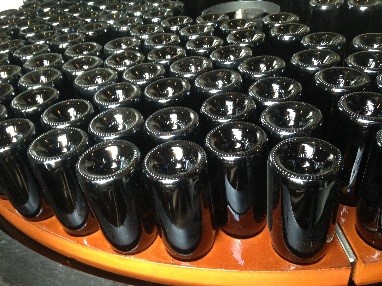At the beginning of summer, we have a lot of work in the vineyard, we left it to work in the cellar…
… Where we proceed to a key and delicate step in the making process of the champagne (and the last before selling)
The Disgorgment
Disgorgement is the process that ejects the sediment, presents in the bottle, under the force of the pressure in the bottle. The sediment formed during the “prise de mousse champenoise”.

To notice : there is 2 types of disgorgment, one is mecanic and the second is manual, says “à la volée”.
In practice…
When we have a lot of bottles, we use a machine…
The bottles are manipulated many times but always with delicate movements. It should be vertically below in the refrigerated tank of brine at a constant temperature of around – 25°C.
After several minutes, a long ice plug of 4cm is created in which the sediment is trapped. The bottles are positioned in the machine and they are turned upright and the cap removed. The pressure drives out the stopper plus the ice plug with the deposit trapped inside it. The disgorgment is finished.
It is immediatly followed by the dosage…
The bottles take the way to add the dosage of liqueur, because the disgorgment leaves a void in the bottle that must now be filled. During this stage, a little oxygen quantity enters the bottle, it participates with liqueur of dosage at the aromatic evolution.
Next the corking and muselage…
The natural cork ( with 3 natural cork discs at the base of stopper) and the muselet are capped.
The bottles after cleaning are put in boxes before being sold.
Our vintage champagne require time (a few months) to recover its balance before the tasting.





